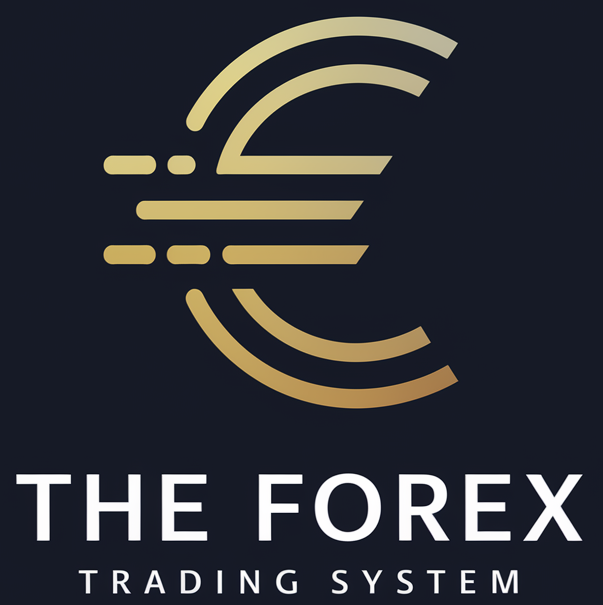What is the Vortex Indicator?
The Vortex Indicator (VI) is a technical analysis tool used by traders to identify market trends and potential price reversals. Developed in 2009 by Etienne Botes and Douglas Seipman, the Vortex Indicator provides a visual representation of market momentum by combining price and volume data. The indicator consists of two lines, VI+ and VI-, which oscillate around a central line, signaling the strength and direction of trends.
The Vortex Indicator is useful for spotting bullish and bearish trends in the market, as well as generating potential buy and sell signals. Many traders incorporate the Vortex Indicator into their trading strategies, using it as a confirmation tool alongside other technical indicators and chart patterns. By analyzing the movements and crossovers of the VI+ and VI- lines, traders can make more informed decisions about entering or exiting positions in the market.
History and Development
The Vortex Indicator was developed in 2009 by traders Etienne Botes and Douglas Seipman. They wanted to create an indicator that could provide clear and timely signals about trend direction and strength. Botes and Seipman took inspiration from J. Welles Wilder’s Directional Movement Indicator (DMI), which also uses positive and negative directional lines.
However, the Vortex Indicator differs from the DMI in several key ways. First, it focuses more on time reactivity, aiming to minimize lag and sensitivity. Second, the Vortex Indicator is not designed to predict market tops or bottoms, but rather to identify the beginning and end of trends. By focusing on these specific goals, Botes and Seipman created an indicator that is effective yet also easy to understand and implement.
Components of the Vortex Indicator
The Vortex Indicator consists of two main lines:
1. VI+ (uptrend line): Measures positive trend movement. When VI+ is above VI-, it signals a bullish trend.
2. VI- (downtrend line): Measures negative trend movement. When VI- is above VI+, it signals a bearish trend.
These lines are calculated using several key components:
– True range (TR): The largest absolute value of either the current high minus current low, current high minus previous close, or current low minus previous close. TR accounts for market volatility.
– VM+ (buying pressure): The absolute value of the current high minus the prior low.
– VM- (selling pressure): The absolute value of the current low minus the prior high.
The VI+ line is derived from the sum of VM+ over a set period (usually 14), divided by the sum of TR over that same period. Similarly, the VI- line uses VM- in its calculation. By comparing the two lines and analyzing crossovers and divergences, traders can assess trend direction, strength, and potential reversals.
| Vortex Indicator Component | Description |
|---|---|
| VI+ (uptrend line) | Measures positive trend movement |
| VI- (downtrend line) | Measures negative trend movement |
| True range (TR) | Accounts for market volatility |
| VM+ (buying pressure) | Absolute value of current high minus prior low |
| VM- (selling pressure) | Absolute value of current low minus prior high |
How to Use the Vortex Indicator
Using the Vortex Indicator effectively involves both interpreting the indicator signals and setting it up properly on your charts. The key signals to watch for are crossovers of the VI+ and VI- lines, which can indicate a trend change. Divergences between the indicator and price action can also provide valuable information.
Interpreting the Vortex Indicator
The main signals generated by the Vortex Indicator include:
1. Bullish trend confirmation: When VI+ crosses above VI-, it confirms an uptrend is in place. Consider buying opportunities.
2. Bearish trend confirmation: When VI- crosses above VI+, it confirms a downtrend is in place. Consider selling opportunities.
3. Potential trend reversals: If the VI lines are intersecting frequently, it may indicate a ranging market or an impending trend change.
4. Divergences: If price makes a higher high but the Vortex Indicator makes a lower high, it signals weakness in the uptrend. The opposite is true for downtrends.
It’s important to note that like all indicators, the Vortex Indicator shouldn’t be used in isolation. Confirm signals with other tools like chart patterns, support and resistance levels, and additional momentum oscillators.
Setting Up the Vortex Indicator
Most trading platforms and charting software include the Vortex Indicator as a standard tool. To set it up:
1. Select the Vortex Indicator from the indicator list
2. Choose your desired timeframe (e.g. 5 min, 15 min, 1 hour, daily)
3. Adjust the VI_Length parameter if desired (default is 14 periods)
4. Set the colors for the VI+ and VI- lines
Once added to your chart, the Vortex Indicator will appear as two lines oscillating around a central zero line. The default 14 period setting works well for most traders, but short-term traders may prefer a lower VI_Length like 7 periods.
As with any new indicator, it’s smart to test the Vortex Indicator out on historical data before using it to make live trades. Run it on different currency pairs and timeframes to assess its reliability for your particular trading style and strategy. With practice and experience, you can optimize the Vortex Indicator to enhance your market analysis and decision making.
Trading Strategies Using the Vortex Indicator
The Vortex Indicator can be deployed within various trading strategies, from discretionary to algorithmic approaches. The key is to understand the indicator’s strengths and limitations and combine it intelligently with other tools. Below are some common ways traders utilize the Vortex Indicator.
Active Trading Strategies
Active traders can use Vortex Indicator crossovers to generate buy and sell signals:
– Go long when VI+ crosses above VI-: Uptrend confirmation, look for bullish price/volume action, set stop below a support level.
– Go short when VI- crosses above VI+: Downtrend confirmation, look for bearish price/volume action, set stop above a resistance level.
– Exit long when VI+ crosses below VI-: Uptrend over, consider taking profit or set trailing stop if trend still strong.
– Exit short when VI- crosses below VI+: Downtrend over, consider taking profit or set trailing stop if trend still strong.
Traders may also watch for divergences as an early sign of trend weakness. For example, if price makes a higher high but VI+ makes a lower high, the uptrend may be losing momentum. Active traders could use this signal to tighten stops or take partial profits.
Algorithmic Trading Strategies
The Vortex Indicator can also be programmed into automated trading systems. Algo strategies may include VI crossovers as one of multiple factors in trade entry and exit rules. For example:
– Long entry rules: VI+ crosses above VI-, price above 200MA, RSI above 50
– Short entry rules: VI- crosses above VI+, price below 200MA, RSI below 50
– Long exit rules: VI+ crosses below VI- or stop loss/take profit levels hit
– Short exit rules: VI- crosses below VI+ or stop loss/take profit levels hit
By combining the Vortex Indicator with other technical criteria, algorithmic traders can create more robust systems that generate high probability signals. Machine learning algorithms could even optimize the Vortex Indicator’s parameters for particular currency pairs and market regimes.
Risk Management
No matter the specific strategy, risk management is crucial when using the Vortex Indicator (or any technical tool). Key principles include:
1. Setting stop losses: Always determine your max risk per trade and honor stops.
2. Diversifying: Spread risk across multiple currency pairs and strategies.
3. Confirming signals: Look for confluence with other technical indicators.
4. Avoiding overtrading: Respect your trading plan, even when VI signals look tempting.
By combining the Vortex Indicator with sound risk management, traders can get an edge in fast-moving forex markets without overexposing themselves.
Advantages and Limitations of the Vortex Indicator
Like all technical indicators, the Vortex Indicator has both strengths and weaknesses. It’s important for traders to understand what the indicator can and cannot do in order to set realistic expectations and utilize it effectively.
Advantages
1. Identifies trends: The Vortex Indicator excels at confirming established trends, helping traders align themselves with the prevailing market direction.
2. Generates timely signals: VI crossovers can provide early signals of trend changes, allowing nimble traders to enter and exit positions ahead of the crowd.
3. Accounts for volatility: By incorporating true range in its formula, the Vortex Indicator automatically adjusts for varying market volatility.
4. Easy to interpret: The Vortex Indicator is simple and intuitive, with clear bullish and bearish crossover signals. This makes it accessible to traders of all experience levels.
5. Works across timeframes: The Vortex Indicator can be applied to any chart timeframe, from short-term scalping to long-term position trading.
So in the right hands, the Vortex Indicator can be a powerful tool for analyzing and trading market trends. It provides a clear, objective framework for assessing trend direction and strength.
Limitations
However, the Vortex Indicator is not without limitations:
1. Lagging indicator: Like most trend-following tools, the Vortex Indicator will lag price to some degree. It may generate late signals in strongly trending markets.
2. Frequent whipsaws: During choppy market conditions, the VI lines may crisscross repeatedly, generating multiple false signals. The indicator performs best in strongly trending markets.
3. Lacks predictive power: The Vortex Indicator is a trend confirmation tool, not a predictive one. It will not forecast market tops and bottoms in advance.
4. Requires confirmation: To avoid false signals, it’s important to confirm Vortex Indicator signals with other technical tools and risk management principles.
So while the Vortex Indicator has clear strengths, it also has some notable drawbacks. Traders should not expect it to be a “holy grail” that works perfectly in all market conditions. It’s best used as a complement to other forms of analysis.
Conclusion
In summary, the Vortex Indicator is a powerful tool for analyzing market trends and generating timely trading signals. By measuring trend direction and strength, it can help traders align themselves with the prevailing market momentum. The indicator’s intuitive design and visual representation make it accessible to forex traders of all experience levels.
However, like any technical indicator, the Vortex Indicator is not infallible. It can struggle in choppy market conditions and may generate false signals if used in isolation. As such, it’s important to combine the Vortex Indicator with sound risk management principles and confirm signals with additional technical tools.
When used judiciously, the Vortex Indicator can add significant value to a trader’s arsenal. It excels at identifying and confirming market trends, which is a core component of many successful trading strategies. Additionally, the indicator’s ability to adapt to changing market volatility sets it apart from some alternative tools.
Ultimately, the Vortex Indicator is a versatile and effective weapon for forex traders serious about technical analysis. While it should not be relied upon exclusively, it can certainly give traders an edge in fast-moving currency markets. By understanding both its strengths and limitations, traders of all stripes can harness the power of this innovative technical indicator.
See also:
- Keltner Channels: Definition, Uses, and Trading Strategies
- Ultimate Oscillator: A Comprehensive Guide to Trading Strategies
- Qstick Indicator: Definition, Calculation, and Trading Strategies
- Chikou Span: Understanding Its Role in Technical Analysis
- Average True Range (ATR): Understanding, Calculation, and Trading Strategies






